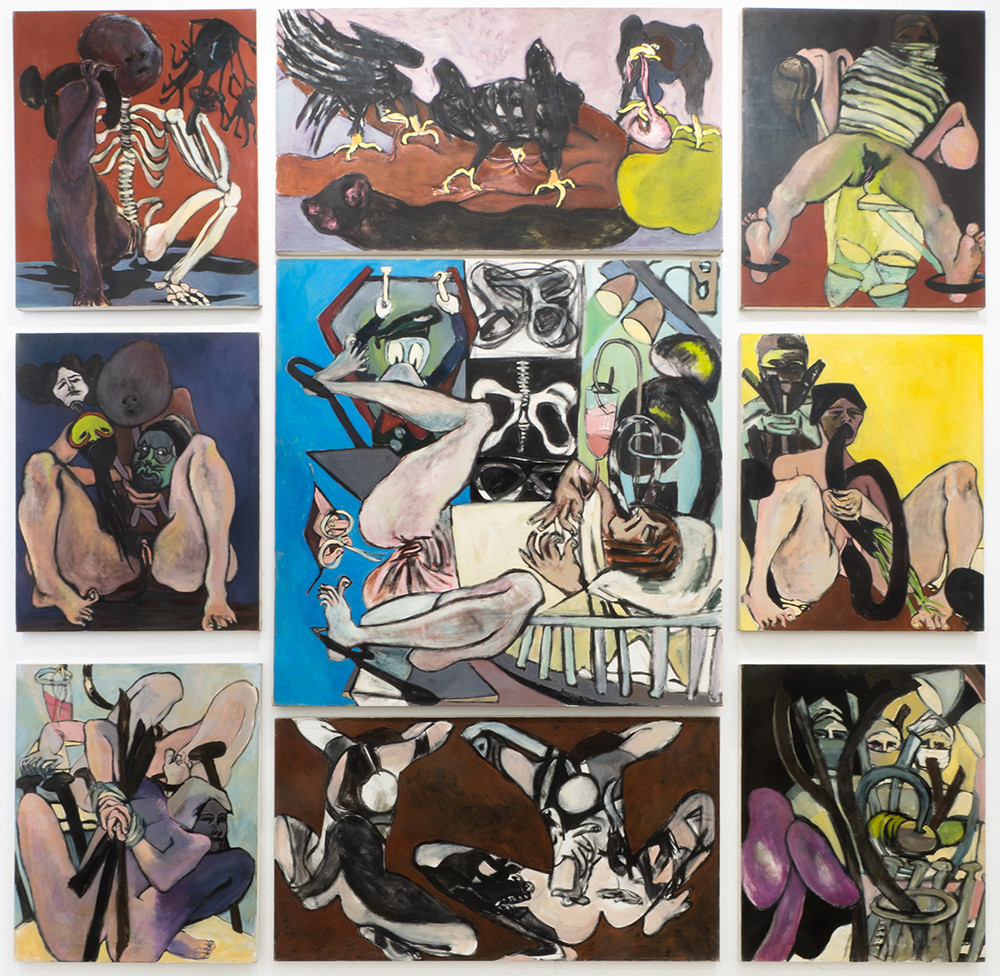[ad_1]
Juanita McNeely’s exhibition, her first at James Fuentes, comprised two large multi-panel paintings that transmit the pain of their female subjects with an intensity that is almost too much to bear and a painterly confidence that makes it hard to look away. McNeely, now eighty-four, has been a practicing painter since she was a teenager. Her 1967 arrival in New York from the Midwest coincided with the growth of second-wave feminism, and she actively participated in groups like Women Artists in Revolution and the Redstockings. McNeely conjures the brutal pressure of existing in a repressive culture through her morphing of imagery, while remaining deeply immersed in traditions of figurative painting.
Is It Real? Yes It Is (1969) consists of eight rectangular panels surrounding a larger square one, all depicting different moments in a female figure’s nightmarish medical scene. As in Max Beckmann’s paintings, which McNeely studied closely as an art student in St. Louis, thick black lines define contours and colors skew to unsettling hues. In most of the panels, warm siennas, purples, and black jar against cool acid yellows and hospital mint greens.
The work speaks to McNeely’s own trauma as a young artist, when she was diagnosed with a malignant tumor while pregnant and her life was in the hands of doctors unwilling to operate because of the risk to her fetus. Though she eventually had the operation, the experience was harrowing, and she channels its horror here. In the central canvas, a female figure lies on a hospital bed with her legs in stirrups, a tube stuck in her mouth, and her eyes shut. She is surrounded by pelvic X-rays, medical lights, and, incongruously, a sailor-capped Donald Duck, his arms upraised as if in a cruel taunt. From a small slit in the flat blue background emerges a hand gripping a pair of forceps pointed at her genitals. One panel, painted from the perspective of the patient, depicts three masked doctors seen through a tangle of tubes and lights, while another shows a trio of black buzzards clawing and shredding the flesh of a lifeless body, which casts a giant phallic shadow.
The show’s other work, Triskaidekaptych (1986), comprises thirteen large panels that wrapped around the corner of the front gallery. The enormous scale of the work seems designed to prove a point: McNeely painted the canvases four years after suffering spinal damage in a fall that left her reliant on a wheelchair. Each panel shows a figure in a strange space: some are eerie landscapes with elongated cypresses; others, fractured interiors with windows askew. Scumbled paint throughout leaves traces of earlier layers, giving the scenes an ominous undertone. Thin black bars hold figures in contorted positions, while a grouping of spikes forms a bed for a flayed horse. In one panel, a human body hung by its ankle from the ceiling has been torn open—a mess of bloody bones and viscera. As in many paintings throughout McNeely’s career, the toes are at once splayed out and bent, powerfully conveying the sensation of extreme pain. The wonderful paradox of McNeely’s work is that it takes an enormous vital energy—a combination of rigor and wildness—to depict this kind of despair.
[ad_2]
Source link


